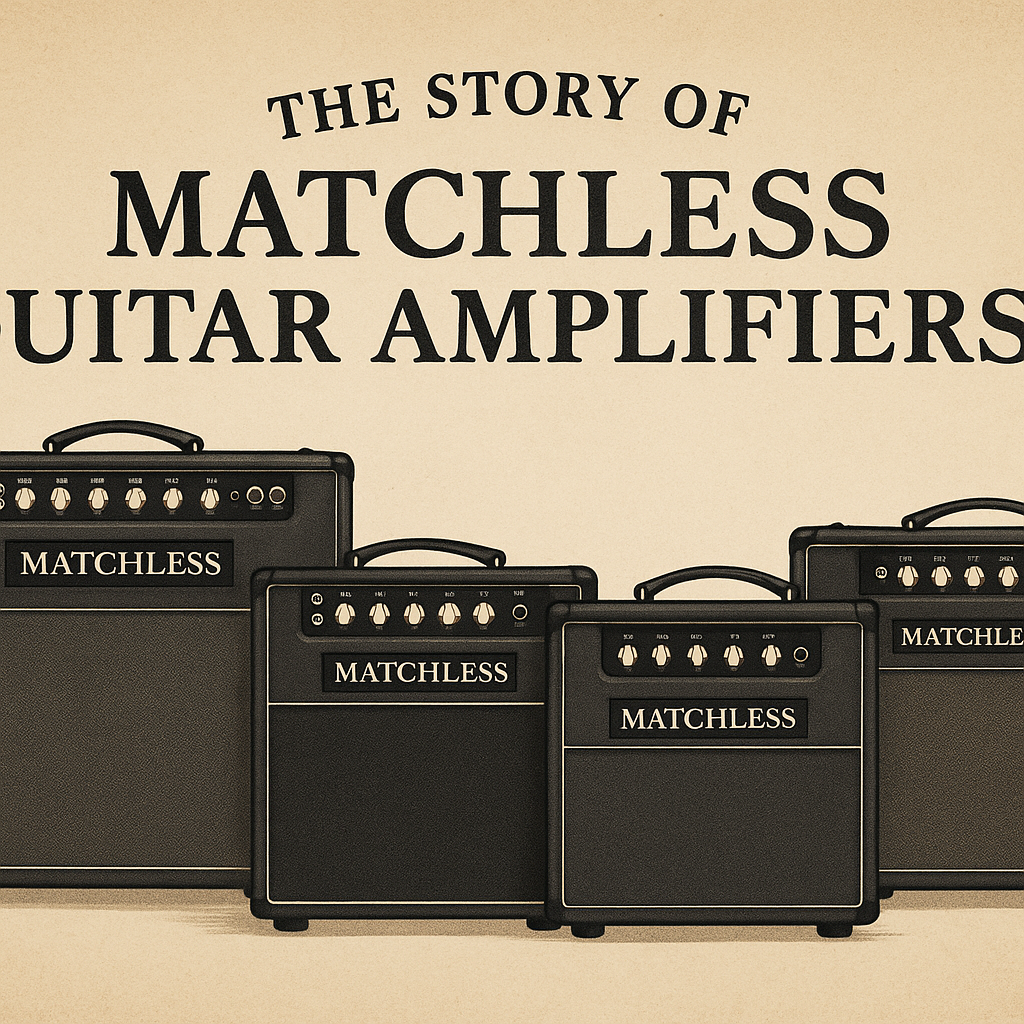Humble Beginnings & Rise to Boutique Fame
Founded in 1989 in Hollywood by Mark Sampson and Rick Perotta, Matchless Amplifiers began as a small-scale operation, hand-building amps at a kitchen table with partners Steve Goodale and Chris Perrotta . A breakthrough came when Steve Goodale arranged for their DC‑30 to be featured in Guitar Player Magazine’s boutique amp shootout—an event that helped launch the brand’s reputation.
The Expansion, Trouble & Revival
By 1994, Matchless partnered briefly with U.S. Music Corporation to fuel growth, but that collaboration ended by 1995 with Sampson taking full control . However, financial strains led to bankruptcy in 1999. In 2000, longtime employee Phil Jamison acquired and relaunched the company, with most of today’s amps produced under his guidance.
Building the Boutique Amp Legacy
Matchless is widely credited with igniting the boutique amplifier craze of the early 1990s—reviving hand-wired, point-to-point craftsmanship when big brands had largely moved to printed circuit boards and cost-saving shortcuts.
Quality and durability were their cornerstones. Guitarist-focused design, from road-worthy steel chassis to Baltic birch cabinets and heavy-duty wiring, was built to last—even floating through a tsunami and still working when recovered.
Phil Jamison still personally tests and signs off on each amp, ensuring every unit upholds their high standards.
Iconic Models & What Makes Them Stand Out
DC‑30 (“30‑Series”)
Based on the Vox AC‑30 but refined for reliability and tonal richness. It became Matchless’s flagship amp, praised for its dual-channel complexity and chimey overdrive.
Clubman, Chieftain, Lightning, Tornado, Super Chief
These models expanded the lineup with new tonal palettes and wattage options—added after the initial success of the 30-series.
Independence 35
A luxurious three-channel amplifier renowned for detailed, articulate tone across all levels—from sparkling cleans to rich distortion. Its rich craftsmanship demands a hefty price and bulky transport, but it rewards with sensational expressive range.
Laurel Canyon
Matchless’s first 6V6-powered amplifier, inspired by the musical legacy of 1960s–70s Laurel Canyon. Compact yet powerful, it offers lush reverb and touring-grade build quality.
Who’s Playing Them?
Matchless amps have found their way into the hands of legendary musicians across genres:
-
Bob Dylan – DC‑30
-
Billy Gibbons (ZZ Top) – DC‑30
-
Brian May (Queen) – DC‑30
-
Adam Franklin (Swervedriver) – DC‑30
-
Angelo Bruschini (Massive Attack) – Independence
-
Ben McKee (Imagine Dragons) – Thunderman series
-
Brian Bell (Weezer) – Independence
-
Colin Hay (Men at Work) – Laurel Canyon and DC‑30 Reverb
Legacy & Tone That Endures
-
Boutique benchmark: Matchless helped spark the boutique amp movement, inspiring many smaller amplifier makers to follow suit .
-
Built like tanks: Their over-specced construction ensures unmatched road reliability and sonic fidelity .
-
Tone with character: From chiming cleans and nuanced pedal response to creamy overdrive, these amps are beloved by discerning players .
Conclusion
The Matchless story weaves craftsmanship, tone, and resilience into a legacy that still shapes boutique amplifier culture today. From the cherished DC‑30 to the stately Independence 35 and the vintage‑inspired Laurel Canyon, these hand‑wired marvels continue to attract legendary artists—and aspiring ones—with their tone, attitude, and build integrity.









